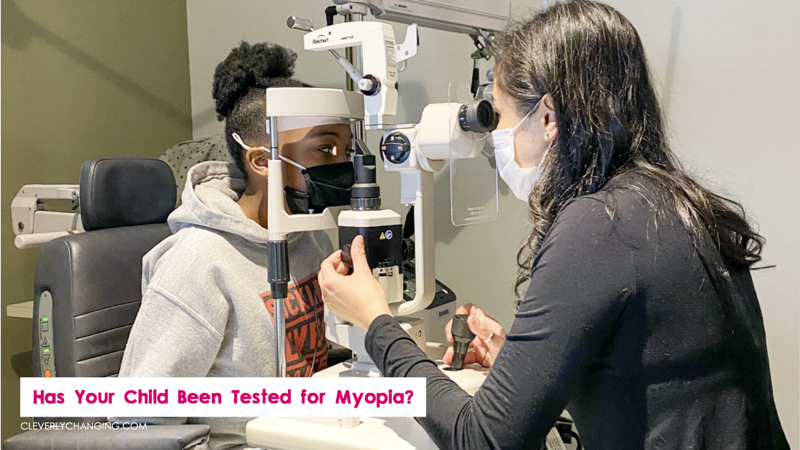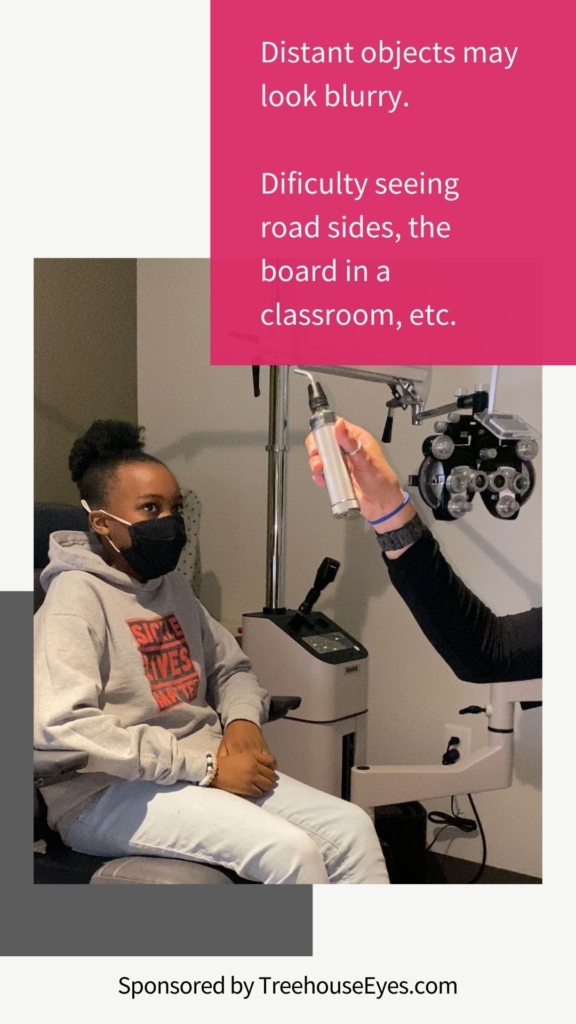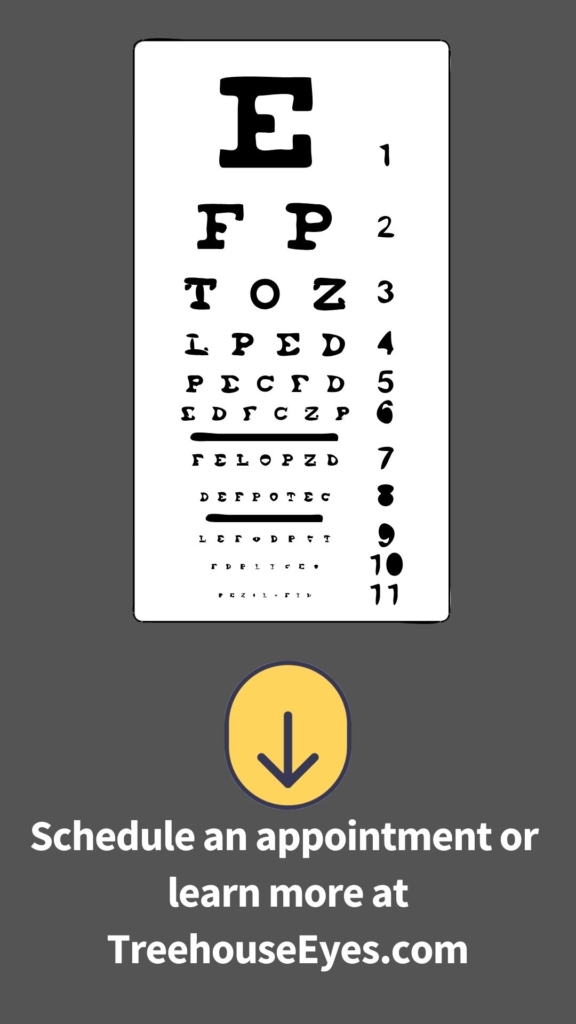Many thanks to TreehouseEyes.com for sponsoring this post. Opinions within the post “Has Your Child Been Tested for Myopia?” are 100% my own.
Have you heard of myopia before? It’s no surprise if you haven’t – I wasn’t familiar with the name of the eye disease either until recently. I had to do a little research to find out more information and, coincidentally, learned that June is Child Vision Awareness Month. Myopia, often referred to as nearsightedness, is an eye disease that progresses throughout childhood. People who suffer from myopia see distant objects as blurry and are at greater risk for other eye diseases as well. According to the CDC, myopia is the most common refractive error for those younger than 59.
As a result of recent events and a busy schedule, my family delayed our routine eye exam. Once 2021 came around, I knew it was time for everyone in our family to get their eyes tested. Like many children these days, my daughters are indoors more than I was as a child and they rely on phones, laptops, and tablets for school, entertainment, and connecting with friends and family. When it came time to get their eyes examined, I agreed that they needed to run the whole gamut of tests and not just the simple eye chart exam.
What Are Risk Factors for Myopia?
Optometrists have reported seeing myopia in younger and younger patients, so getting screened is essential. Myopia is not contagious, however, it can be passed down from parents to their children through genetics. As a child grows, an eye doctor checks to see if their eyes are growing disproportionately longer than they should. When this happens it can result in a diagnosis of myopia. When I visited Treehouse Eyes I learned that some of the risk factors include:
- Genetics
- Not enough outdoor time
- A sedentary lifestyle
- Health conditions such as type 2 diabetes
- Excessive use of electronics and near-work
- Ethnicity (it appears to be more common in children of East Asian descent)
What Are the Symptoms of Myopia?
Small children may have trouble articulating symptoms of myopia so make sure you look out for the following symptoms:
- Blurred vision
- Difficulty seeing road signs, the classroom board, or other distant objects
- Frequent headaches
- Flashing lights in a person’s eyes
- Continually squinting
- Floaters (blurred dots) in a person’s field of sight
- Use this checklist to assess your child’s risk
Can Myopia Be Prevented?
Yes, there are actions we all can take to have better eye health. To prevent myopia, parents can help promote eye health in their children by:
- Getting at least 2-3 hours of sunshine each day
- Obtaining adequate amounts of vitamin D by going outdoors or via dietary supplements. According to the NIH, the average person needs about 600IU per day of Vitamin D.
- Wearing protective eyewear when necessary – such as bright, sunny days.
- Limiting screen time by taking breaks and following the American Pediatric Guidelines for each age group.
- Making sure there is sufficient light in the room when reading.
- Using the dark mode on your devices with light text on darker screens.
- Getting screened regularly by a pediatrician, an ophthalmologist, or an optometrist.
Where Do You Go for Treatment?
Treehouse Eyes, with 6 locations across the Washington, DC area, is a great place to find out whether or not your child has myopia. You can visit Treehouseeyes.com to book a free myopia consultation and learn more about how optometrists manage myopia. Watch this video from Dr. Doyle, who explains myopia treatment in children.
I took my daughters to get their eyes examined at Treehouse eyes. We had a pleasant experience. The test didn’t hurt, and it was quick and efficient. I was surprised that we were done in about an hour for both of my girls. Overall, it was similar to a regular yearly exam with only a few more tests. What stood out the most to me was the eye doctor explained the test and results to me and my children in layman’s terms. She also listened to our questions and answered our concerns. In addition, Dr. Doyle also took time to share preventive measures that we could start implementing immediately.
After the eye exam, I was grateful to learn that my children did not have myopia. As a parent I feel relieved that I was able to get them tested. Now, I am trying to be mindful of my own screen time habits so I can set a better example for my children.
AD. When was your child’s last #eyeexam?
— Elle Cole (She/her) (@Cleverlychangin) June 7, 2021
Doctors are seeing younger kids develop myopia (#nearsightedness) due to more screen time. Book a FREE myopia consultation https://t.co/Or8sB2GYOy and start protecting their #eyes. @TreehouseEyes leads in treating #myopia in children. pic.twitter.com/SCqudrnE8J






